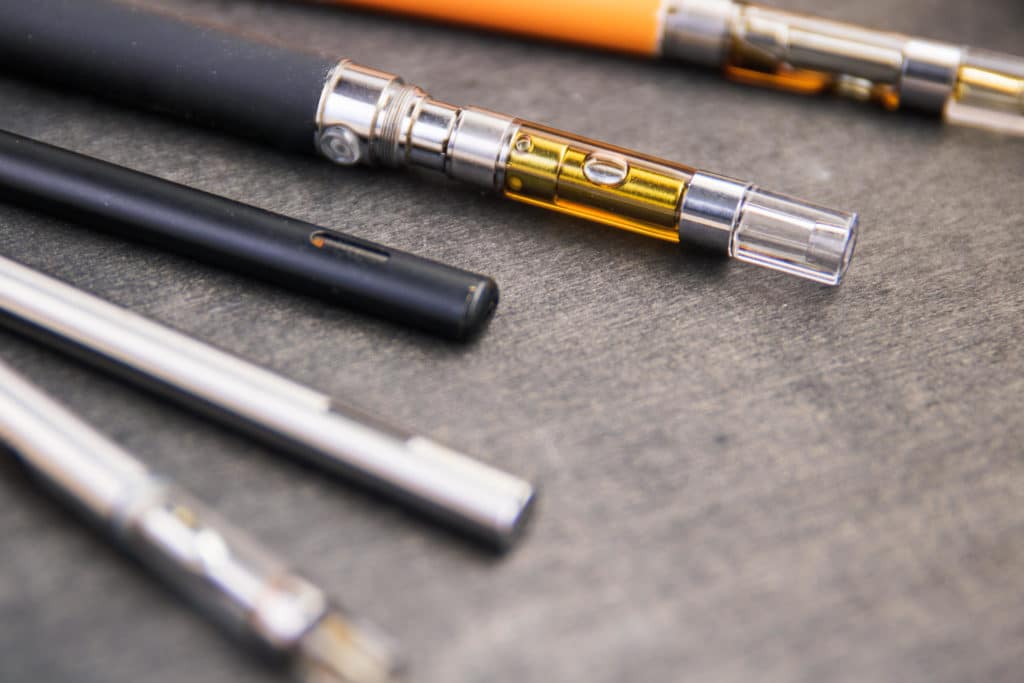
There’s no question that vaping is increasingly becoming a popular pastime activity among young adults. Euromonitor, a market research group expects the number of adults who vape to hit almost 55 million by 2021. And it’s no surprise, young adults are especially attracted to the fact there’s no funky smell in e-cigarettes or stigma attached to vaping compared to smoking cigarettes. Another plus is the fact that Vape pens have a lower per-use cost than traditional cigarettes.
But is vaping harmful?
Lately, there’s been all sorts of negative news regarding vaping. There have been cases of people developing lung disease in the United States with the figure being estimated at 200 across a number of states. Two fatalities have been reported in Illinois and Oregon this year.
Now before we get into panic mode, let’s review the facts about vaping, more so with the use of cannabis extracts like THC.
Here’s what we know so far:
The Center for Disease Control and Prevention (CDC) say they aren’t sure what’s caused the surge in vaping-related lung injuries but they’re pointing the blame towards contaminants or counterfeit substances present in vaping products.
What this means is that it’s not the standard vaping products that are to blame per se but the contaminants that lace vaping products labeled as THC. The chief culprit is vitamin E acetate that might be present in some of these vaping products.
Health experts have warned that solvents used in vaping oils can vary a lot especially considering that there are counterfeit or black-market products currently being sold. This is further compounded by the fact that some consumers buy solvents which may be mislabelled to prepare do-it-yourself home brews.
The CDC and FDA have gone on to put out a statement that “anyone who does use e-cigarette products should not buy these products off the street (e.g., e-cigarette products with THC or other cannabinoids) and should not modify e-cigarette products or add any substances to these products that are not intended by the manufacturer.”
As you mull over this, it’s important to get a little perspective on the whole vaping issue.
There are several irrefutable facts regarding vaping especially when compared to cigarette smoking.
For starters, vape pens or e-cigarettes do not burn cannabis products but instead use convection or conduction to heat up your weed. This means that the active ingredients that give you a high (cannabinoids and terpenes) are turned into vapor minus the carcinogenic by-products of combustion. In contrast, cigarette burning generates ash, tar and carbon monoxide exposing cigarette smokers to a high risk of getting cancer.
Apart from excluding tar from what you inhale, the low temperature in vaping pens helps preserve cannabinoids and terpenes that would otherwise be destroyed by combustion, meaning you’re able to inhale more of these medicinal compounds. The upside to this is that the increased concentration of cannabinoids in the vapor means that you don’t need to inhale as many times as when you smoke cannabis and therefore experience less irritation. It also decreases the likelihood that you’ll develop an addictive dependence on medicine, at least that’s what a review by Mallory Loflin in the 2015 Journal of Respiratory Therapy suggests.
You may also be interested to know that research commissioned by Public Health England in 2015 also gave the verdict that vaping is 95% less harmful than smoking and goes ahead to suggest that using e-cigarettes can help tobacco smokers kick the habit.
Unanswered questions
All these facts aside, there are still many unanswered questions regarding vaping and lung disease. Robert H. Shmerling, Faculty Editor at Harvard Health Publishing, poses the following questions in his post:
“…are lung problems more common among vapers who already have breathing problems (such as asthma) or who use marijuana? Is it more common among younger individuals? Does use of e-cigarettes cause the lung disease? Or is an added substance (such as marijuana) or another contaminant the culprit? Since the FDA does not actively regulate e-cigarettes, it’s particularly difficult to get answers.”
Also consider this, the CDC reports that “Cigarette smoking is responsible for more than 480,000 deaths per year in the United States, including more than 41,000 deaths resulting from second-hand smoke exposure. This is about one in five deaths annually, or 1,300 deaths every day.” When you compare vaping to smoking, clearly the fear being created around vaping is greatly exaggerated.
However, this is not to downplay the fact that there can be negative effects of vaping when you use the wrong kind of hardware or cannabis extracts. We take the health of our customers and the wider cannabis user community very seriously, which is why we think it’s important to give both sides of the story.
How to Stay Safe While Vaping
When choosing which vaporizer to use it’s important to understand how the hardware works. The heating element is the most crucial component in your vaporizer because it gets really hot and can give off toxic fumes if it’s manufactured from low-quality materials. So you want to keep away from unbranded and imitation vaporizers- a lot of them which are sourced from China and usually sold on wholesale kinds of websites like alibaba.com, aliexpress.com, et cetera.
The other thing you want to avoid is modifying the cannabis strains that you inhale by adding any other substances to make your own concoction. Please stick to the tried and tested.
Final Words
Our products are sourced from only the highest grade CO2 extracted oils and blended with the highest quality botanical food-grade terpenes available. The blends we use do not contain any vitamin e, PG, VG, PEG, MCT, Coconut oil, or any other harmful ingredients that other vape pens normally use.
At LiT we pride ourselves for reliably delivering high-grade vaping products to our clients while at the same time providing them with a safe and secure shopping experience. Shop online now to enjoy the finest strains, concentrates and edibles in Canada at the lowest prices.
Happy vaping!
